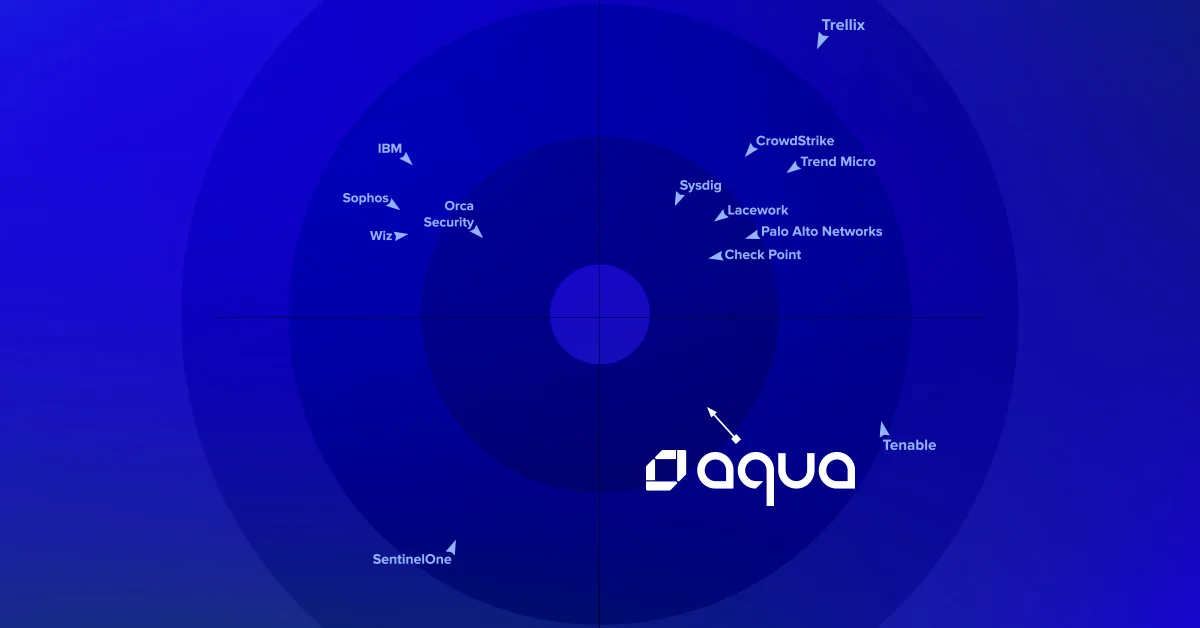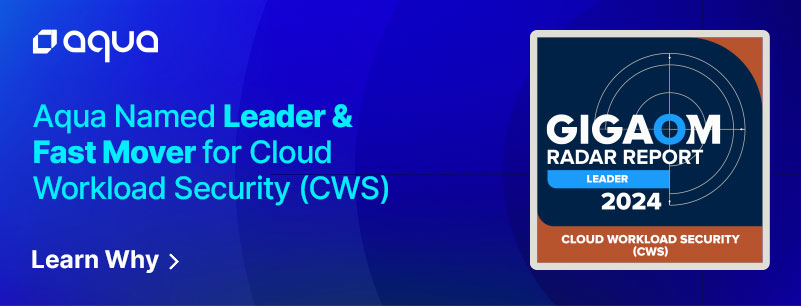Cloud workload security (CWS) plays a critical role in safeguarding the integrity and resilience of cloud native workloads. Defined through the lens of GigaOm, CWS primarily revolves around fortifying the dynamic and continuously evolving workloads within cloud environments. Its significance lies in bolstering security measures by pinpointing vulnerabilities, ensuring adherence to compliance standards, and swiftly mitigating potential threats.
GigaOm underscores the importance of evaluating CWS solutions based on their effectiveness in securing running workloads rather than emphasizing capabilities such as Cloud Security Posture Management (CSPM) and Infrastructure as Code (IAC) scanning. This approach aligns with the imperative of protecting the core assets and processes running within cloud infrastructures, reflecting a nuanced understanding of modern cloud security needs.
The critical role of Cloud Workload Security (CWS)
Cloud Workload Security (CWS) stands at the forefront of modern cybersecurity strategies, tasked with safeguarding the integrity and confidentiality of cloud native workloads. Essentially, CWS entails a comprehensive set of measures designed to protect the dynamic and ever-expanding array of workloads within cloud environments. Its significance cannot be overstated, particularly in the context of the escalating threats targeting cloud infrastructures. CWS solutions play a pivotal role in identifying vulnerabilities, enforcing compliance standards, and swiftly responding to emerging security threats, thereby bolstering the overall resilience of cloud workloads.
Securing cloud-native workloads presents a myriad of challenges, stemming from the inherent complexity and dynamic nature of cloud environments. Traditional security approaches often struggle to keep pace with the rapid deployment and scaling of workloads in the cloud, leaving organizations vulnerable to various cyber threats. Moreover, the distributed nature of cloud-native architectures introduces new attack vectors and complexities, further complicating the security landscape. As organizations embrace hybrid and multi-cloud strategies, the challenges become even more pronounced.
Hybrid and multi-cloud environments introduce many variables, ranging from the choice of cloud providers and hosting models to the orchestration of workloads across diverse infrastructures. This complexity highlights the critical need for a robust CWS solution capable of providing seamless protection across all workloads, irrespective of their deployment environment or hosting model. Such a solution serves as a linchpin in ensuring consistent and effective security measures across hybrid and multi-cloud deployments, thereby enabling organizations to navigate the complexities of modern cloud environments with confidence.
Why organizations are turning to CWS solutions
Organizations are increasingly turning to Cloud Workload Security (CWS) solutions to address the limitations of relying solely on cloud providers for security. While cloud providers offer built-in security features, they typically follow a Shared Responsibility Model, wherein they secure the infrastructure, but customers are responsible for securing their data, applications, and workloads. This model reenforces the need for organizations to implement additional security measures beyond what is provided by their cloud service provider.
Implementing CWS solutions offers a range of benefits that are essential for modern cloud environments. Firstly, these solutions help safeguard against vulnerabilities by continuously scanning and monitoring workloads for potential security risks. This proactive approach is crucial for identifying and addressing vulnerabilities before they can be exploited by malicious actors. Secondly, CWS solutions aid in ensuring compliance with regulatory requirements and industry standards.
Moreover, CWS solutions play a pivotal role in preventing attacks by leveraging advanced security mechanisms such as threat intelligence, behavioral analysis, and anomaly detection.
These capabilities enable organizations to detect and thwart various types of cyber threats, including malware, ransomware, and insider attacks, thereby minimizing the risk of data breaches and disruptions to business operations. The rapid evolution of CWS solutions has led to the integration of cutting-edge technologies such as artificial intelligence (AI) and machine learning (ML). Additionally, CWS solutions provide organizations with real-time security insights and actionable intelligence, empowering security teams to make informed decisions and respond swiftly to emerging threats. As cyber threats continue to evolve in complexity and sophistication, the adoption of CWS solutions is becoming increasingly essential for organizations seeking to secure their cloud workloads effectively.
GigaOm Radar: Navigating the CWS landscape
The GigaOm Radar serves as a comprehensive navigational tool for organizations seeking to navigate the Cloud Workload Security (CWS) landscape. Through its Radar chart, GigaOm provides a visual representation of the maturity and innovation of various CWS vendors, offering valuable insights into the strengths and capabilities of each solution. By assessing vendors across multiple criteria, such as hybrid environment support, workload detection and response, automated compliance checks, and innovation in technology, the GigaOm Radar chart enables organizations to make informed decisions about which solutions best align with their security requirements and strategic objectives.
Additionally, the Radar chart highlights emerging trends and innovations within the CWS market, empowering organizations to stay ahead of evolving threats and technologies and serves as an invaluable resource for organizations seeking to enhance their cloud security posture and navigate the complex landscape of CWS solutions.
Aqua’s positioning on the GigaOm Radar emphasizes our commitment to delivering a comprehensive solution that addresses the evolving security needs of cloud native environments. Our exceptional performance in hybrid environments, Kubernetes nodes, Tanzu Application Service (TAS), serverless containers like Fargate, and serverless functions demonstrate our adaptability to various cloud-native stacks and platforms. This adaptability empowers customers to choose the best solutions for their needs without compromising security, facilitating a secure and seamless cloud transformation.
Aqua’s advantage
One of Aqua’s standout features is our exceptional hybrid environment support, which ensures that regardless of the chosen technology or cloud service provider, our security measures remain fully compatible. This flexibility not only simplifies the management of security policies but also ensures consistency across all environments. Customers can create a set of rules once and deploy them universally, saving time and streamlining operations while maintaining granular control over security configurations.
Moreover, our innovative approach to AI-guided remediation sets us apart in the market. Our AI-driven functionality, introduced in 2023, showcases our dedication to staying ahead of emerging security challenges. This innovative solution enables automated detection and remediation of security incidents in real-time, bolstering overall resilience against evolving threats.
GigaOm’s recognition of Aqua’s leadership in the Innovation/Platform Play quadrant reaffirms our commitment to delivering cutting-edge solutions that address the dynamic nature of cloud infrastructures. As GigaOm notes, Aqua’s designation as a leader in innovation is attributed to our comprehensive solution, exceptional hybrid environment support, automated configuration enforcement, and innovative approach to AI-guided remediation.
Meeting emerging security demands head-on
In conclusion, Aqua’s prowess in critical cloud workload security is evident through our array of key capabilities, which address the ever-evolving landscape of cloud native threats. Our commitment to exceptional support in runtime protection reflects our dedication to providing a surgical approach to attack prevention, ensuring that organizations are equipped to thwart even the most sophisticated cloud-native attacks.
Moreover, our efficiency in managing and securing diverse, complex infrastructures, including hybrid and multi-cloud environments, reenforces our adaptability and readiness to safeguard enterprises against many security challenges. With a steadfast commitment to innovation, we continuously evolve our offerings to meet emerging security demands head-on, ensuring that our users remain ahead of the curve in the ever-changing cybersecurity landscape.
Innovation is at the core of our cloud workload security strategy, with key capabilities that exemplify our dedication to staying ahead of the curve. Our cloud native security approach, tailored to the diverse and dynamic nature of hybrid and multi-cloud infrastructures, ensures that organizations remain protected against evolving threats. Which is why we believe the first-ever GigaOm Radar Report for Cloud Workload Security (CWS) named us as a Leader and Fast Mover in Innovation and Platform Play.
To read the full report visit our GigaOm Cloud Workload Security Report page.


